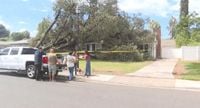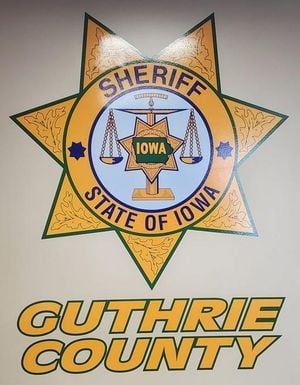On the morning of September 2, 2025, Riverside, California, was thrust into chaos as an unseasonably strong windstorm swept through the city and its surrounding neighborhoods. Residents described the experience as downright "surreal," with gusts peaking at up to forty miles per hour, transforming what should have been an ordinary late-summer day into one marked by toppled trees, power outages, and a flurry of emergency calls. The event, driven by a rare Santa Ana wind pattern, left a trail of disruption—and a community grappling with the unpredictable power of nature.
According to meteorologists cited by the Riverside Fire Department and local news outlets, the winds were the result of a deepening low-pressure system off the California coast colliding with a high-pressure ridge inland. This pressure difference created a corridor for powerful gusts to race through the city’s river valleys and urban canyons. The event was particularly notable not just for its strength, but for its timing: Santa Ana winds typically strike in the fall or winter, not at the tail end of summer. This anomaly, experts say, is a sign of shifting climate patterns and increased weather volatility in Southern California.
Wind speeds during the event soared beyond twenty-five miles per hour in several parts of Riverside. Data from the Riverside Airport recorded average speeds of 24 mph and peak gusts of 40 mph, while downtown saw averages of 26 mph and gusts up to 38 mph. Even elevated neighborhoods like Riverside Heights weren’t spared, clocking wind gusts as high as 35 mph. For many, the experience was both fascinating and frightening. "It's just a surreal experience that it happened," Riverside resident Breanne Juarez told KTLA. She described how a massive tree crashed onto her home during the storm, piercing parts of the structure. "You see it on the news all the time but you don't expect it to happen to your house," Juarez said.
Juarez’s ordeal began around 8:45 a.m. on September 2, as she was startled by what she initially thought was an earthquake. "Luckily I was in the back of the house, so it just felt like a big earthquake to me," she recalled. As the tree crashed down, she quickly gathered her dog and a few belongings before evacuating. "My neighbors came and ran to see if I was OK. Water was flowing down into the house, the fire alarm was going off. I’m going to cry again," Juarez said, her voice still trembling from the memory. The incident left her and her family displaced, but, remarkably, no one was injured.
The windstorm’s impact was felt far beyond one household. Captain Paul Seawright of the Riverside Fire Department reported that the agency was inundated with calls for service throughout the morning. "That wind event caused a lot of emergencies in local and adjacent neighborhoods," Seawright told local news. The majority of emergencies involved felled trees and damaged power lines, and the department had all apparatuses on alarm status to ensure public safety. Spokesperson Chuck Tasker added that crews were busy throughout the city, clearing debris and downed trees from roads and public spaces. The 6600 block of Mt. Whitney Avenue, where Juarez’s home was hit, was just one of many areas affected by the storm’s wrath.
The winds also caused widespread power outages, leaving thousands of households in the dark. Downed tree limbs took out power lines in several neighborhoods, and utility companies scrambled to restore service as quickly as possible. The disruption extended to transportation as well: debris on highways led to slowdowns and occasional closures, while public transit schedules were thrown into disarray. Residents were urged by city officials to avoid unnecessary travel and secure loose outdoor items to prevent further hazards.
Outdoor events and daily routines were upended. Sporting events, farmers markets, and outdoor classes were either postponed, relocated, or canceled altogether. The constant howl of the wind, combined with swirling dust clouds and the sound of breaking branches, created an atmosphere that many locals described as eerie and unsettling. Social media was soon flooded with videos and photos capturing the storm’s chaotic effects, from bent trees to trashed decorations tumbling down city streets.
Perhaps most concerning was the elevated risk of wildfires. The dry, gusty winds prompted fire agencies to issue heightened alerts, and residents were reminded to adhere strictly to burn restrictions. In a region already grappling with prolonged drought, the threat of a wind-driven blaze was never far from anyone’s mind. City officials activated emergency operation centers and provided frequent safety advisories through social media, neighborhood apps, and local news outlets. Emergency shelters were set up for those displaced by power outages or structural damage.
Authorities also distributed safety tips to help residents weather the storm: secure outdoor objects, avoid driving in high winds, stay indoors if possible, keep emergency kits ready, and monitor local alerts. These recommendations weren’t just for this event—they were part of a broader push to prepare the community for the increasing frequency of extreme weather.
The economic toll of the windstorm, while not catastrophic, was nonetheless significant. Property damage ranged from minor roof repairs to more serious structural harm, and the cost of cleanup and restoration added up quickly for homeowners and small businesses. Utility disruptions affected work productivity and daily convenience, while the specter of wildfires drove up insurance premiums and prompted new conversations about emergency preparedness. According to local insurers, mitigating risk will require more than just luck—it’ll demand forward-thinking urban planning and resilient infrastructure.
In response to these challenges, Riverside’s city planners and emergency managers are taking action. Initiatives underway include grid hardening to reinforce power lines and poles (a project slated through 2027), expanding multi-platform community alert systems, and launching annual public education campaigns. The city is also investing in urban green infrastructure—tree planting and windbreak planning—to reduce the wind tunnel effect in densely built areas. Biannual inter-agency emergency drills ensure that fire, police, and utility crews can coordinate effectively when disaster strikes.
The recent windstorm, while disruptive, has galvanized Riverside’s resolve to adapt to a changing climate. As climatologists point out, the late-summer timing and intensity of the event are signs of broader shifts in Southern California’s weather patterns. Warming trends, urban heat islands, and persistent drought are all contributing to more frequent and severe wind events. For Riverside, the lesson is clear: resilience isn’t just about surviving the storm—it’s about being ready for whatever nature throws next.
As the city cleans up and residents return to normalcy, there’s a sense that this “surreal” episode was more than just a one-off. It was a wake-up call—a reminder that the forces shaping our environment are growing ever more unpredictable, and that preparation, unity, and innovation are the keys to weathering the storms ahead.




